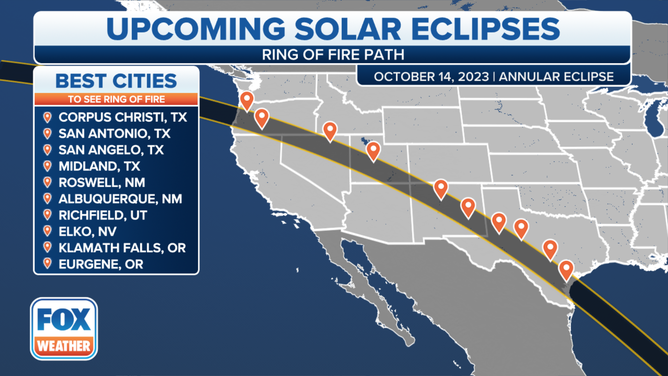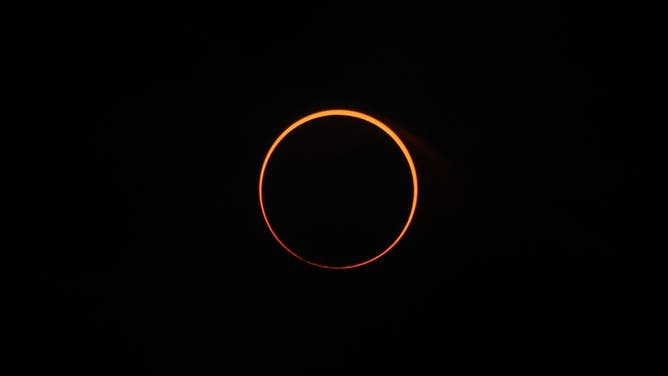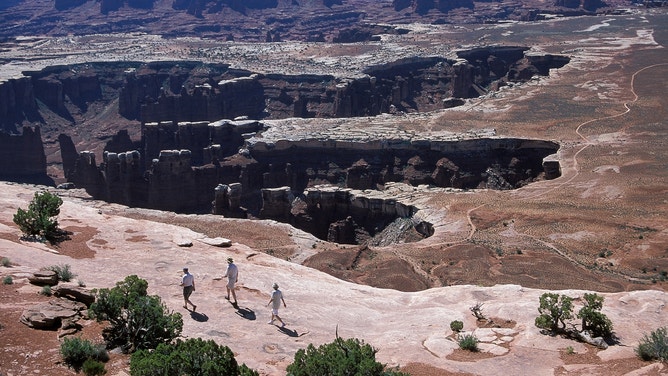Utah's Canyonlands National Park prepares for October solar eclipse crowds
Eclipse viewers who want to see the "ring of fire" near or in a national park on Oct. 14 will need to have a plan for traffic, lodging and bring their eclipse glasses.
'Ring of fire': Annular eclipse happening in October will pass over western US
Former NASA Astronaut Mike Massimino talks about two upcoming solar eclipses, the first an annular eclipse happens in October followed by a total solar eclipse in April.
CANYONLANDS NATIONAL PARK, Utah – National parks in the Southwest will offer epic locations to view the October annular eclipse, but if you don't want to miss a chance to view the "ring of fire" from Utah's Island in the Sky, planning early is essential.
On Oct. 14, the Moon will block most of the Sun's light during what is called an annular solar eclipse. Maximum eclipse starts just after 9 a.m. PDT in Eugene, Oregon, and then moves across the Southwest ending in Texas before Noon CDT.
Canyonlands National Park in Utah is among several national parks along the solar eclipse path but among the only ones where eclipse chasers can see the so-called "ring of fire." Located about 90 minutes from Moab, the area in Utah is known for biking, hiking and rock climbing. Arches National Park, about a 30-minute drive away, will see a partial solar eclipse.
Canyonlands National Park Ranger Cadence Cook explains some of the beauty of the park.
HERE ARE THE BEST US STATES FOR HIKING
"Canyonlands is a huge park, and it has a lot of different beautiful features and even districts," Cook said. "This park is kind of defined by the Green River and the Colorado River coming together and the canyons that they make. Most folks visiting at Canyonlands will go to the Island in the Sky District."
Island in the Sky includes mesa tops and beautiful overlooks into deep canyons filled with red rocks.
Cook said fall is one of the more popular times to visit the park, which received nearly 800,000 visitors in 2022.
High temperatures are, on average, in the 70s, the normal low temperature is about 40 degrees, and there aren't a lot of storms with which to contend.
"In general, it's a really, really lovely time of year," Cook said.
Not all parts of the park will be under the full annular eclipse path, but rangers are expecting crowds to arrive early to get a good viewing spot.
The campground in Island of the Sky has 12 sites, all first-come, first-served, and Cook expects them all to be full.
There is another campground called The Needles in the North District, which offers group site reservations from mid-March to mid-November.
"My recommendation would be to figure out where they're staying as early as possible," Cook said. "I would bet that people will start arriving multiple days in advance to get those first-come, first-served sites. So it's going to be really hard the night before to kind of cruise in and grab a site."
WHERE TO VIEW THE OCTOBER 2023 ANNULAR SOLAR ECLIPSE BASED ON HISTORICAL WEATHER
There are other campgrounds in the area, including some managed by the U.S. Bureau of Land Management, but Cook expects those sites will also fill up days in advance.
Eclipse viewers will also need to plan for traffic into the park.
Even though Canyonlands is a big landscape, there is one paved road into the Island in the Sky District and one road into the Needles District.
Who can see the October solar eclipse?

The path of the annular eclipse will cover the Southwest and Pacific Northwest.
(FOX Weather)
On Oct. 14, an annular solar eclipse will cross North America, Central and South America. The peak solar eclipse will be visible in the U.S. from Oregon down through Texas.
If you are not in the path of the greatest eclipse, a partial eclipse will be visible throughout all of the U.S., including Alaska.
NASA PICKS 5 EXPERIMENTS TO FUND THAT WILL STUDY 2024 TOTAL ECLIPSE IN US
The annular solar eclipse will begin in the U.S. passing over Oregon, Northern California, Nevada, northeast Arizona, Colorado, New Mexico and Texas.
What is an annular eclipse?

File photo: A solar eclipse is visible from district Simeulue, Aceh, Indonesia on December 26, 2019. (Photo by Khalis Surry/Anadolu Agency via Getty Images)
(Getty Images)
When the Moon passes between the Earth and the Sun, it will be at its farthest point in orbit from our planet, which is why it's an annular eclipse, not a total solar eclipse.
Annular eclipses produce a "ring of fire" around the Moon as the Sun's corona peaks out from around the edges of the Moon. That is also why you must wear eclipse glasses through the entire annular eclipse, unlike a total solar eclipse when you can remove your glasses for totality.
"The Moon passes in front of the Sun, and you will also see a portion of the Sun visible as a ring," Cook said. "It's very cool, very beautiful. But it makes it even more important to protect your eyes. Wearing eyewear that is designed for solar observation is going to be the key."
It's a good time to order your eclipse glasses now.
National Parks Service will have some eclipse glasses on hand, but Cook expects those to go fast.



